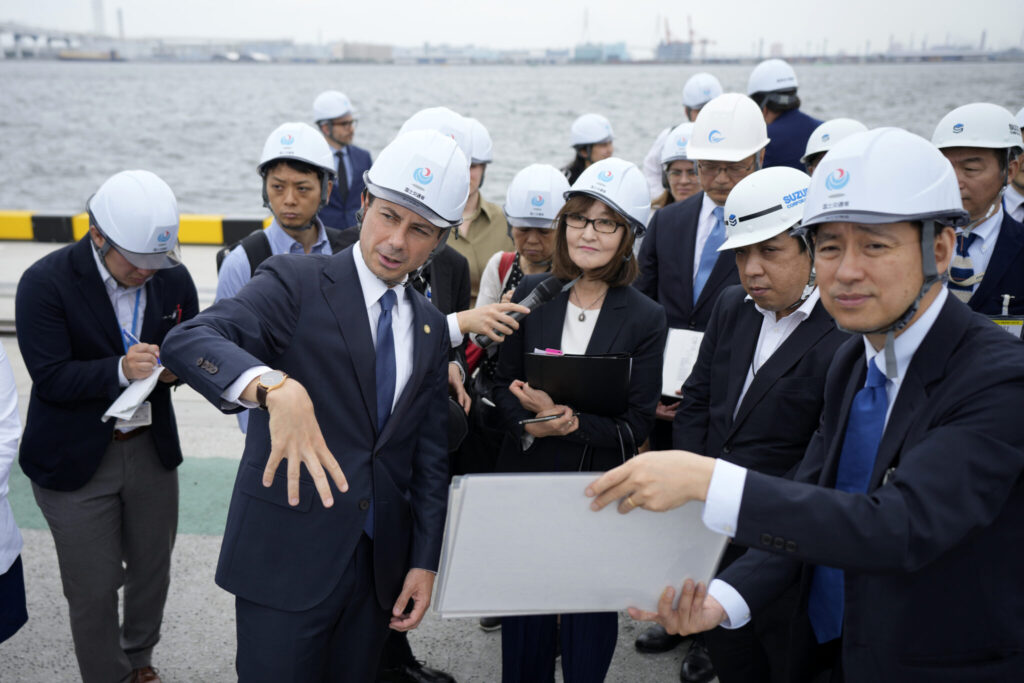U.S. Transportation Secretary Pete Buttigieg said Monday while touring the port of Yokohama near Tokyo, an American push to establish “green shipping corridors” is key to reducing carbon emissions from the shipping industry, as reported by the Associated Press:
US ‘green corridors’ reduce carbon emissions
Newslooks- YOKOHAMA, Japan (AP)
An American push to establish “green shipping corridors” is key to reducing carbon emissions from the shipping industry, U.S. Transportation Secretary Pete Buttigieg said Monday while touring the port of Yokohama near Tokyo.
Buttigieg was in Japan to attend a meeting over the weekend of transport ministers of the Group of Seven advanced economies, who reaffirmed a commitment to reducing emissions from the transport industry and to keeping navigation free and open in the Asia-Pacific region.
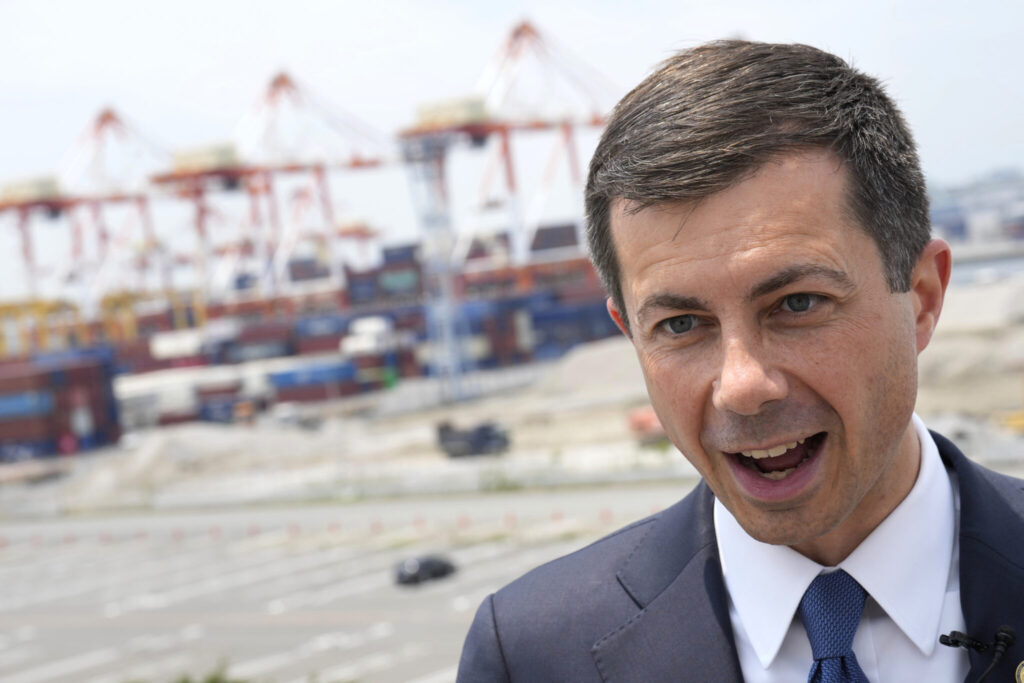
The U.S. is seeking to develop and strengthen partnerships with “like-minded countries” to improve maritime security and keep shipping and aviation corridors open, he told The Associated Press in an interview.
Emissions from maritime transport account for about 3% of total global emissions from human activities. Some 40% of Yokohama’s emissions come from its port.
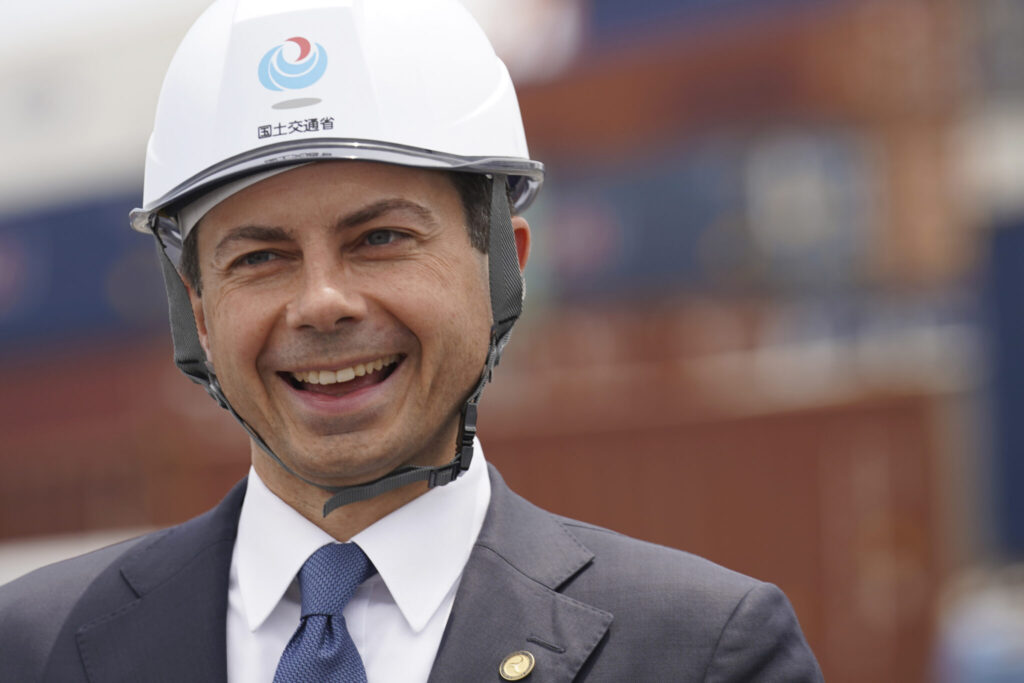
About 90% of all traded goods are moved by sea, and maritime trade volumes are expected to triple by 2050, according to the Organization for Economic Cooperation and Development. Studies predict the industry’s share of greenhouse gas emissions could reach 15%. That has added urgency to efforts to cut such pollution.
The International Maritime Organization, which regulates commercial shipping, wants to halve its greenhouse gas releases by midcentury and may seek deeper cuts this year.
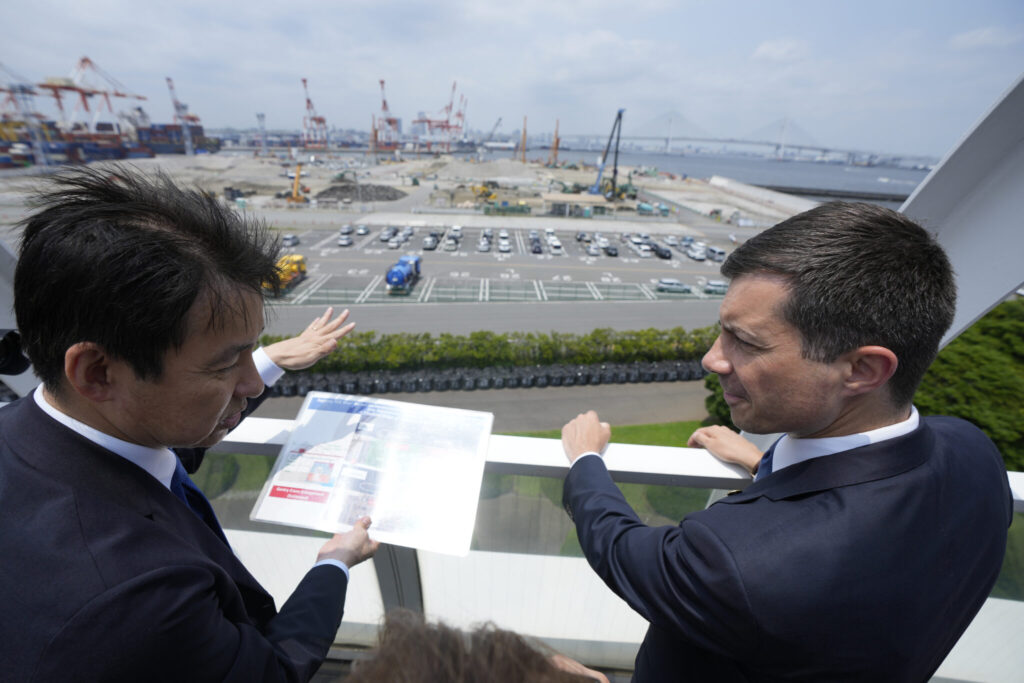
The Port of Los Angeles signed an agreement in March with port authorities of Yokohama and Tokyo to establish the so-called green shipping corridors, aiming to promote emissions reductions through use of net-zero emissions vessels and other efforts to reduce the flow of greenhouse gases from ports and shipping.
It also has formed similar partnerships with Singapore and Shanghai and the U.S. has begun discussing setting up such corridors in Southeast Asia. The initiative is also under discussion by the Quad, which includes Japan, the U.S., India and Australia.
Yokohama is the closest major port to North America across the Pacific and is a major regional hub.
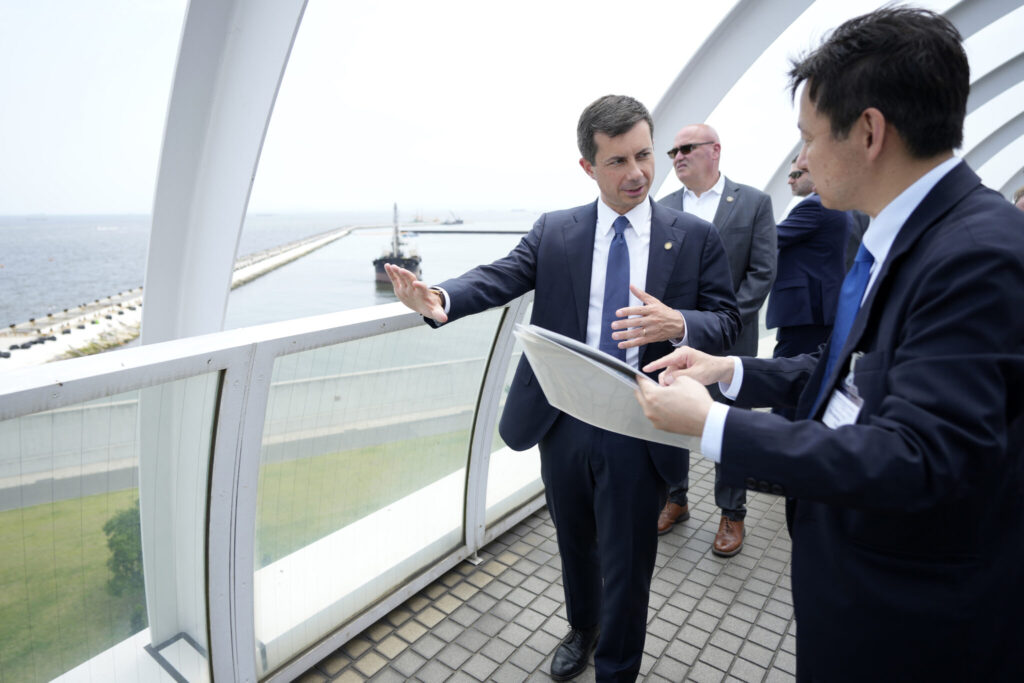
Japan is working to reduce fossil fuel use and promote hydrogen and ammonia as alternative fuels. Yokohama plans to build a terminal for ships to import hydrogen, officials said. Other facilities in Yokohama allow a ship that is idling at the port to be powered electronically instead of burning heavily polluting marine fuel oil.
Similar initiatives are being promoted in U.S. ports, Buttigieg said, adding that Japanese leadership in developing hydrogen as fuel is going to be “a big part of the future.”
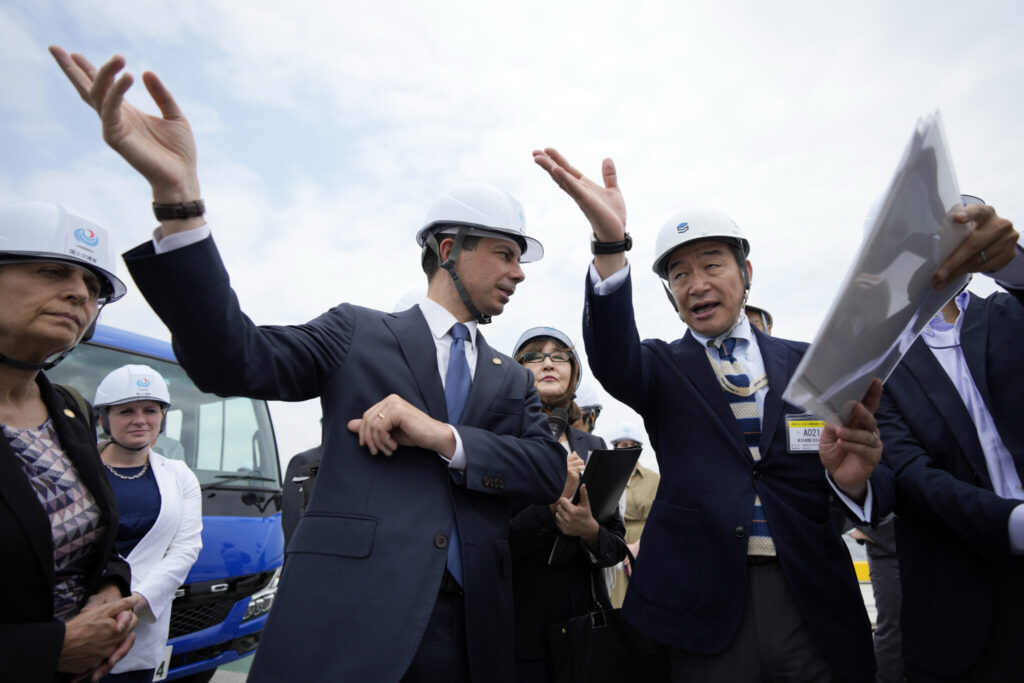
The Biden administration is pushing to speed up the transition to renewable and less polluting energy sources. While attending G7 meetings in April in Sapporo, northern Japan, U.S. Energy Secretary Jennifer Granholm toured the world’s first and only liquefied hydrogen carrier, a ship that showcases Japanese efforts to transform heavily polluting coal into emissions-free hydrogen power.
Japan aims to achieve carbon neutrality in 2050, with a goal of becoming a “hydrogen society.” But its hydrogen industry is still in its initial stages, and still mostly reliant on hydrogen produced using fossil fuels.
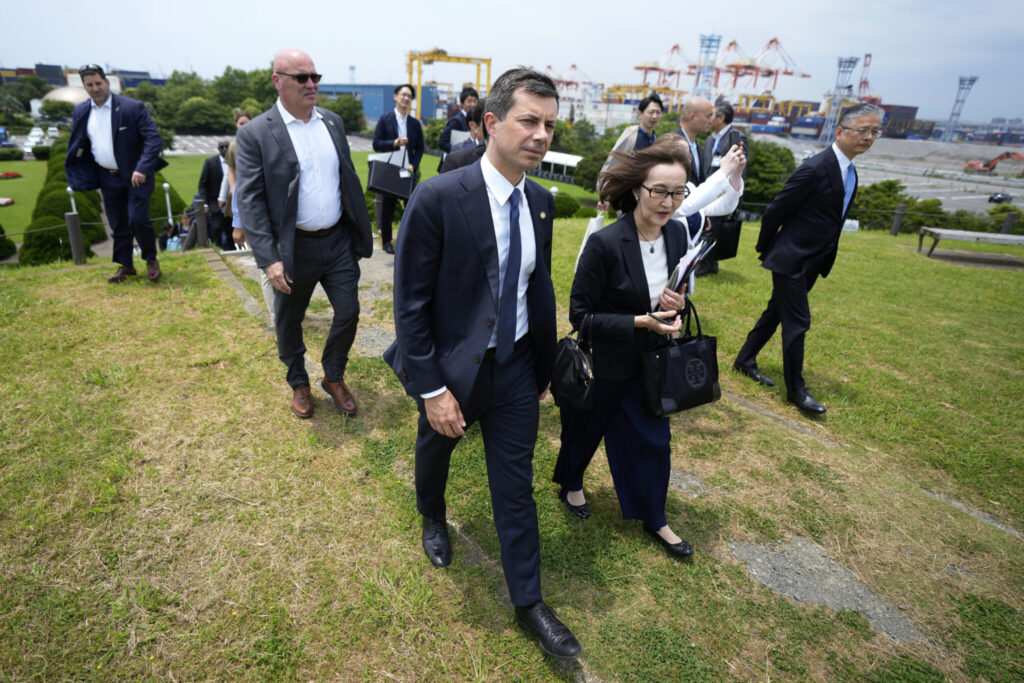
“We know it will take more time for these to be deployed on a widespread basis, but you have to begin somewhere,” he said.
In a joint statement, Buttigieg and other G7 ministers reiterated their countries’ determination to support free and open navigation and expressed strong opposition to any attempts to change the “peacefully established status of territories by force” — a reference to concerns over China’s growing military presence and its longstanding claim to the separately governed island of Taiwan.
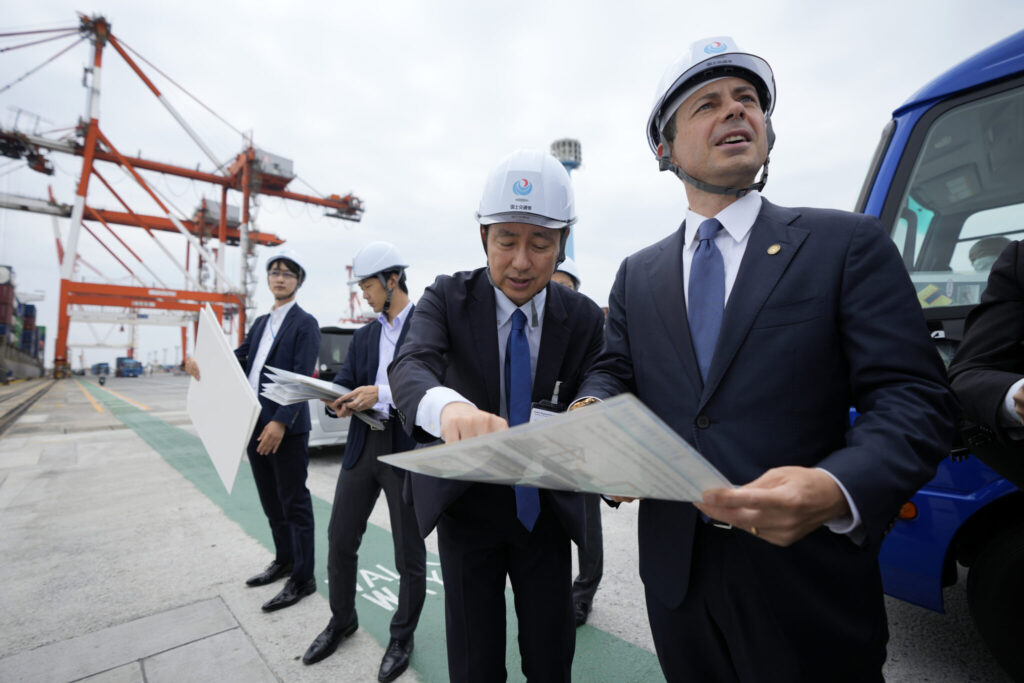
Disruptions to China-based manufacturing and trade during the pandemic, as well as the risk of conflict have prompted moves to diversify supply chains and reduce reliance on Chinese production of strategically important goods and commodities.
“We recognize that there will be a lot of geopolitical challenges affecting both trade and security in this region. This is party of why we have such an emphasis on de-risking and diversifying the economic relationships with regard to China,” Buttigieg said.
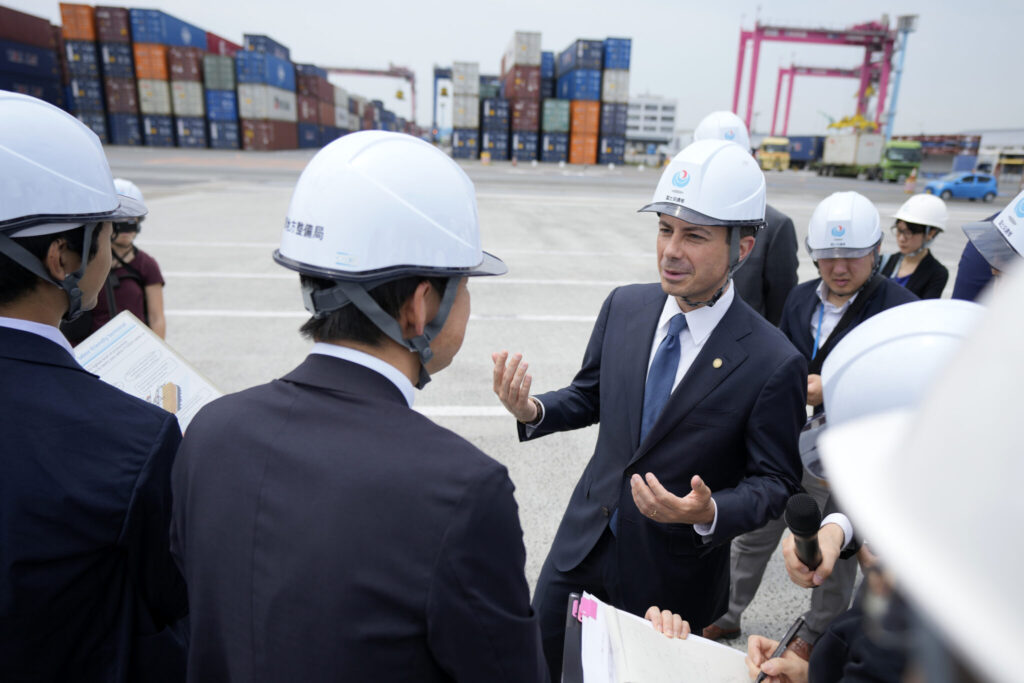
Yokohama is in the midst of a “blue carbon infrastructure” project that features promoting coastal structures like sea walls that can serve as habitat for marine life while absorbing planet-warming gasses emitted by the port.
While touring the port, Buttigieg was briefed about efforts to increase efficiency by accelerating use of remote-controlled cranes and autonomous-driven trailers, which can reduce waiting times for truck drivers and reduce emissions.

